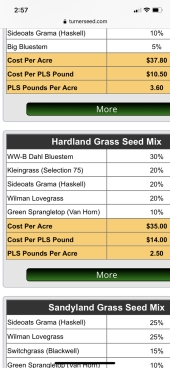




Community Building 2.0: ask me about drL, the rotational-mob-grazing format for human interactions.









Community Building 2.0: ask me about drL, the rotational-mob-grazing format for human interactions.













Community Building 2.0: ask me about drL, the rotational-mob-grazing format for human interactions.
 1
1




"You must be the change you want to see in the world." "First they ignore you, then they laugh at you, then they fight you, then you win." --Mahatma Gandhi
"Preach the Gospel always, and if necessary, use words." --Francis of Assisi.
"Family farms work when the whole family works the farm." -- Adam Klaus









Community Building 2.0: ask me about drL, the rotational-mob-grazing format for human interactions.









R Scott wrote:Do you have any runoff in heavy rains? If not, then a swale won’t help. If it does run, then the swale will help the nutrient wash down instead of off.
I have seen similar marks from burns, either rubber from vehicles or tar from roof. They were there for years.
Community Building 2.0: ask me about drL, the rotational-mob-grazing format for human interactions.




"You must be the change you want to see in the world." "First they ignore you, then they laugh at you, then they fight you, then you win." --Mahatma Gandhi
"Preach the Gospel always, and if necessary, use words." --Francis of Assisi.
"Family farms work when the whole family works the farm." -- Adam Klaus
 3
3





|
A "dutch baby" is not a baby. But this tiny ad is baby sized:
montana community seeking 20 people who are gardeners or want to be gardeners
https://permies.com/t/359868/montana-community-seeking-people-gardeners
|


